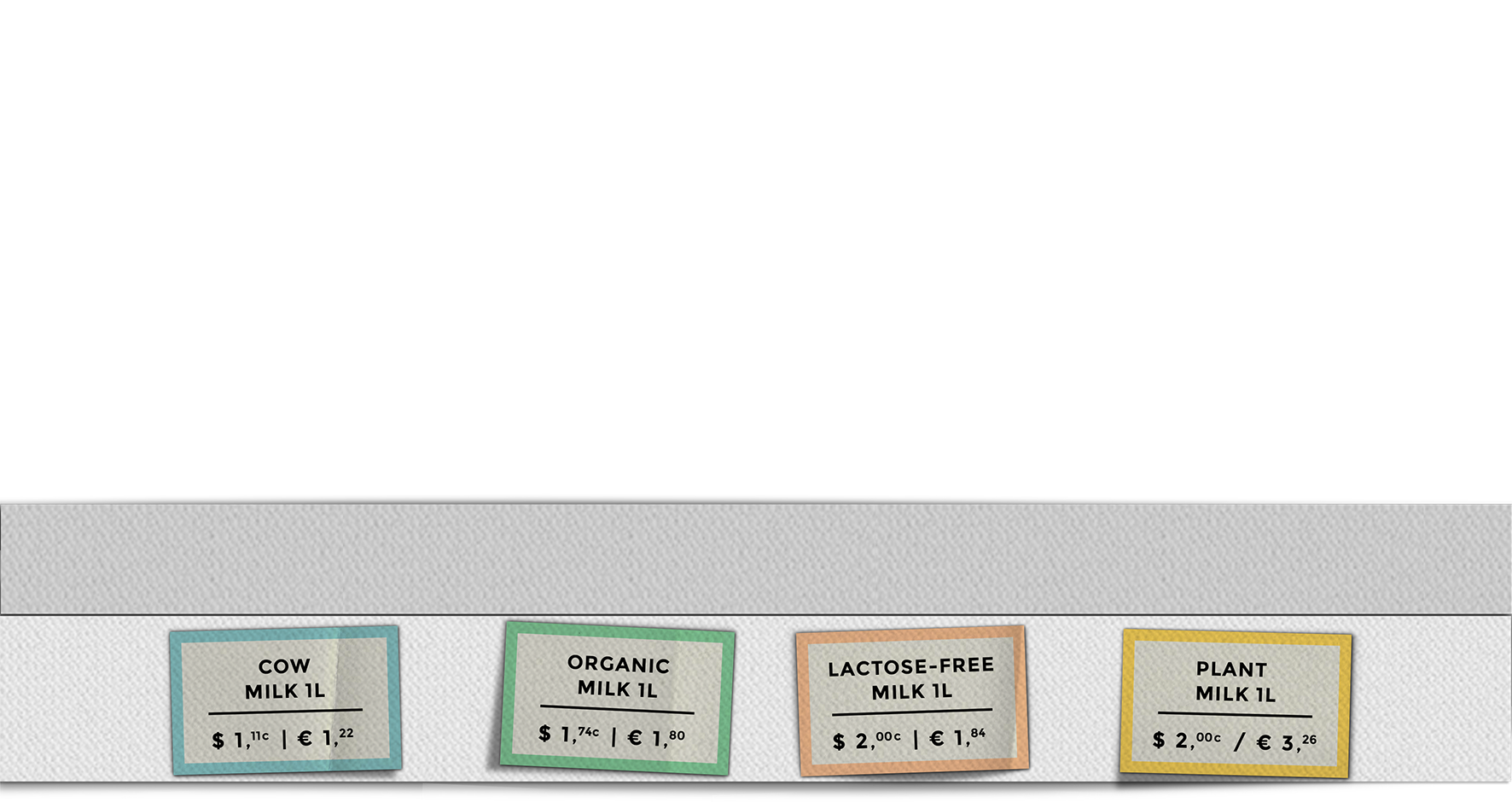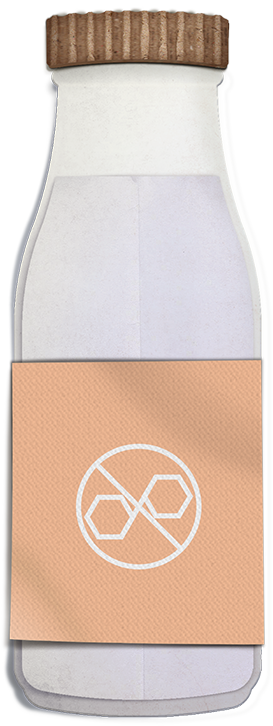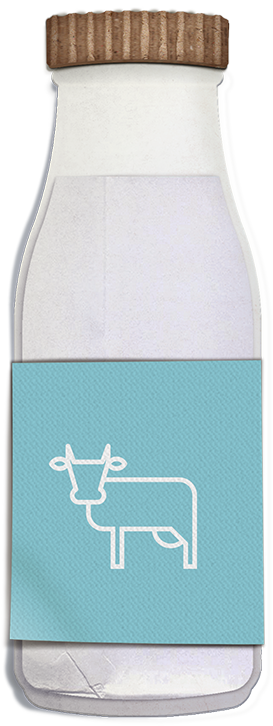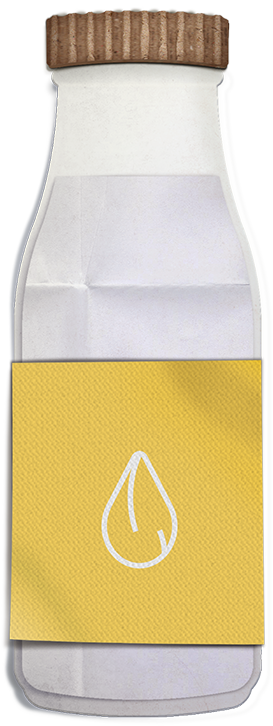What Is Milk
and How Is It Used?
Milk is a pale liquid produced from mammals, as the primary source of nutrition for their infants.
FAO estimates that 747 million tonnes of milk are produced worldwide. They are used for various dairy products.
Does Everybody
Drink Milk?
6 billion people out of 7,4 billion worldwide
Is Drinking Milk Healthy?









Cow Milk
The amount of milk and milk products should be consuming is 3 cups each day, from 9 to adult age.

Plant Milk
People are spreading their fluid intake across a large pool of beverage options.
There is an interest in the adoption of non-dairy milk alternatives, among those the fast-growing markets are the plant milks.
Soy milk, almond milk, rice milk and coconut milk
are the most popular varieties of plant milks.

Organic Milk
The presence of hormones is one of the most significant differences between conventional and organic milk products, keeping the same benefits.

Lactose-Free Milk
Young children almost universally produce lactase and can digest the lactose. But beyond the age of about 7 or 8, only 35%
of the humans can digest lactose.

Milk in Worldwide Megastore
The Current State
Of Daily Information
Nowadays as the popularity of vegetarian and green products increases, many people actually believe that these industrial plant milks also are very healthy.
Their high price and beautiful packaging mislead that what you are buying is good for you and good for the planet!
An analysis of google and youtube show how the public
information is generally pro milk alternatives.
This website aims to fill the information
of the current secondary voice, pro cow’s milk.
Ingredient Labels
In terms of physical chemistry, cow milk has more than 100 separate chemical compounds, in which the major components are water, fat, lactose, casein, whey proteins, and minerals. These constituents are naturally part of milk. In addition, vitamin are considered as trace components*.
*Trace elements are those constituents
found in the parts per million level in milk.
Cereal Chemistry
The typologies of plant-based milks vary widely in their macronutrient (protein, carb and fat) composition, but also in terms of the micronutrients (vitamins and minerals) they contain. Sugar are added, to make them taste similar to dairy milk.





How is its appearance
spread by the brands?
Analyzing the uploading with #almondmilk and #coconutmilk on Instagram, there are photos that contain the logo of the producers visible, recognized as main actors. → Link
The visual language, used by the brands to communicate themselves, focus on the creation of a particular imaginary and a familiar atmosphere, as natural as possible, through the presence of common and daily elements.
@SILK
@SO_DELICIOUS





Digesting Lactose
Lactose intolerance is a condition in which people have digestive symptoms after ingesting milk or its derivatives, due to insufficient levels of the lactase enzyme. This may affect people’s health if it keeps them from consuming enough essential nutrients, such as calcium and vitamin D.
NIH, National Institute of Diabetes and Digestive
and Kidney Diseases, 2014


Most people with lactose intolerance do not require a completely lactose free diet.
Milk and its products should not be completely eliminated because they provide key nutrients.
NIH, National Institute of Diabetes and Digestive
and Kidney Diseases, 2014



How Much Calcium Does Your Body
Need per Day?
The bioavailability of calcium refers to the fraction of daily calcium that is potentially absorbable and the incorporation of it into bones.
The replacement of milk and milk products with calcium-equivalent foods is detrimental to the intake of other essential nutrients.
The amount of calcium a person needs to maintain good health varies by age and sex.
NIH, National Institute of Diabetes and Digestive
and Kidney Diseases, 2014

Nutritional Components
A glass of milk contains 3 of the 4 nutrients that USDA deems under-consumed, calcium, vitamin D and potassium. The 2010 Dietary Guidelines recommend that individuals older than 9 and older consume 3 servings of milk each day.
The percentage refers to the nutrient in a cup of milk, over the the recommend daily amount of it.
U.S. Department of Health and Human Services and U.S. Department of Agriculture. 2010 – 2015 Dietary Guidelines for Americans
Diary Council of California



Synthetic Hormones
FDA, WHO, American Medical Association, National Institute of Health
People for the Ethical Treatment of Animals

The Organic Requirements
It takes more than two years and $1,425 to raise an “organic cow”.
United States Department of Agricolture, Agricultural Marketing Service, 2015
Cow Milk Options
A cup of whole milk contains 149 cal.,
in which 66 cal. are solid fat.
Instead of completely eliminate dairy products,
you should replace solid/higher fat milk and
milk products with lower fat or fat-free options.
U.S. Department of Health and Human Services and
U.S. Department of Agriculture.
2010 – 2015 Dietary Guidelines for Americans.
United States Department of Agricolture,
Economic Research Service, 1975-2014

Are You Aware of These Facts,
When You Go To The Check-out?

